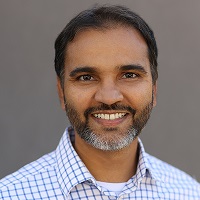 By Sridhar Nemala, Co-Founder and Head of AI, Curie AI
By Sridhar Nemala, Co-Founder and Head of AI, Curie AI
Twitter: @ai_curie
Applied artificial intelligence (AI) is changing the way clinicians diagnose and treat patients. AI will never replace clinicians, but it is already empowering decision-making. Advances in data collection and analysis are making a real-world impact on the treatment of chronic, underdiagnosed conditions, such as pulmonary disease, sleep disorders, arrhythmia, and other conditions. By helping care providers reach, monitor, assess, and treat patients – especially those managing their condition via telehealth – AI. is helping clinicians win a proverbial information game, facilitating continuous, data-driven condition management.
Challenges and Underdiagnosis
Underdiagnosed conditions are often characterized by wide ranging symptom severity and duration. Combined with patient self-reporting and infrequent clinician visits, diagnostic thresholds are often reached days, weeks, or months before detection. Since COVID-19, more patients have turned to telemedicine for chronic symptom management, physically separating clinicians from patients and limiting opportunities to collect objective clinical evidence and making continuous disease management more difficult.
In the pulmonary world, for instance, specialists relied on in-clinic testing to augment patient reports and make a diagnosis, but the pandemic-fueled shift to telemedicine increasingly deprived clinicians of these tools. With rural clinics already facing a significant specialist shortage, the pulmonary health of millions of Americans was suddenly at risk. To make matters worse, it is estimated that by 2025, the country will have a deficit of 1,400 pulmonologists.
Fortunately, advances in remote monitoring and machine learning are helping to close the gap and fuel confident, data-driven decision-making despite disruption to these traditional care channels. Together, these two pillars – the former representing a key advance in data collection, and the latter in data analysis – form the basis of the applied AI befitting clinicians today.
Remote Monitoring Opens Up Patient Data
Remote monitoring technology has advanced considerably in the last two decades. In the era of “smart” devices, patients have a wide range of options for capturing biometric data using wearable devices. As remote monitoring devices become smaller and less intrusive, adherence increases, and this increased utilization is key.
For a machine learning model to “evolve,” it requires sufficiently large data sets. These data sets are used to develop its pattern recognition abilities, allowing it to analyze context and infer significance in the future. Training a model, accordingly, requires more data points than can be provided in the context of a clinical consultation; it is contingent on the ability to collect data routinely over time. As remote monitoring solutions have increased in prevalence and capability, so has the volume and integrity of patient data made accessible for training sophisticated machine learning models.
Once these models are developed, AI can be used to process the large amount of data provided by remote monitoring systems and assist care providers in several key ways. First, it can detect abnormal patterns in biometric data, flagging and contextualizing these patterns for a clinician’s future use. Where the data suggests an acute or significant deterioration in the disease state, it can offer care providers timely insights and serve as a trigger for patient outreach. Finally, as the models used to contextualize patient data ingest more information over time, they can potentially identify new patterns, warning signs, or other forms of evidence that can only be detected by analyzing large data sets over long time periods.
Interestingly, this newly generated evidence can also provide value in cross-specialty care. Pulmonological data could be relevant for specialists treating sleep apnea, cardiac data could be relevant for neurological care, and so on. We can expect these relationships to become clearer over time, and collaborative efforts to follow.
The Advantages of Applying AI to Remote Care
With these principles and opportunities in mind, several medical specialties have taken a keen interest in AI and its potential.
Researchers and clinicians in the world of cardiac electrophysiology are racing to implement applied AI in their diagnostic protocols. There, a recent explosion of available biometric data (the result of highly intrusive diagnostics becoming practically unobtrusive) has made early diagnosis, predictive assessment, and novel disease characterization feasible for the first time. Smart watches are being used to detect atrial fibrillations, predict response to treatment, and codify complex patterns in patient data. Philips is one of several large industry players betting big on this with Cardiologs, which recently demonstrated a striking success rate when predicting a patient’s risk of atrial fibrillation within two weeks following a 24-hour ambulatory ECG.
Meanwhile, in the pulmonary world, the team at Curie AI has built a virtual respiratory practice that uses applied AI, elegant remote monitoring, and an intuitive telehealth platform to empower care providers with continuous data-driven disease management. A beside device analyzes a patient’s breathing patterns as they sleep, converting sound waves into data on respiratory symptoms. This data is used to create insights on a patient’s disease state and progression, allowing the care providers with proactive and personalized disease management of respiratory conditions like COPD and asthma. Today, Curie AI is used by clinicians to provide quality, individualized, and sometimes lifesaving care, at any distance and often with cost-saving advantages.
Healthcare’s Exciting Future
The most exciting aspect of AI in healthcare is the additive momentum inherent in developing sophisticated machine learning models. As the volume, quality, and ingestion of data increases, models grow increasingly sophisticated, new insights are uncovered, and clinical confidence around model predictions increases. The systems we are implementing today will prove more valuable over time, helping clinicians and researchers paint a richer portrait of changing disease states and severity. In healthcare, knowledge is power. Accordingly, as our knowledge base expands, our integrated solutions will become more efficient, rewarding, and proactive, positively impacting more patient lives, and making an impact earlier. It won’t happen everywhere overnight, but it will happen, and it’s something worth looking forward to.
